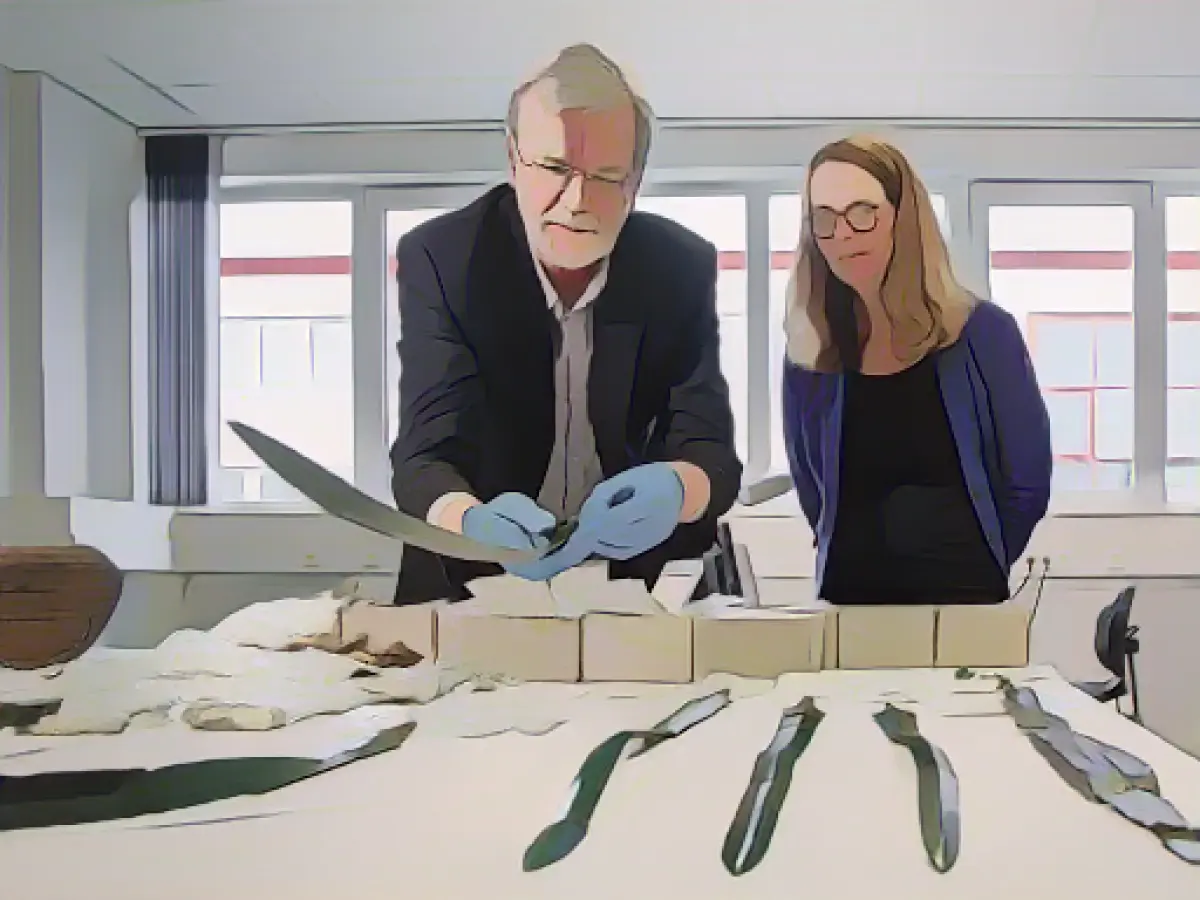Large silver treasure with 6000 coins discovered on Rügen
A spectacular silver treasure from the 11th century containing around 6000 coins has been discovered and recovered by volunteer archaeologists near Lancken-Granitz on the island of Rügen. The silver weight of the coins is 6.7 kilograms, said state archaeologist Detlef Jantzen at the presentation of the find on Wednesday at the depot in Schwerin. It is the largest silver treasure found in Mecklenburg-Vorpommern in recent history. According to initial findings, it had been buried in the ground in a clay pot. It is still unclear why. The clay pot was later broken, probably during plowing.
Value of 34 horses or slaves
At the time, 6700 grams of silver would have corresponded to the value of almost 34 horses, oxen or slaves, said Jantzen. "The price is relatively the same." These were considerable values. However, these figures could only be rough approximations, as there were only a few written sources on the prices of goods from that time. The value could also vary from region to region.
3000-year-old bronze swords
Another important find this year was seven bronze swords from around 1000 BC, some of which were elaborately decorated. They were reportedly discovered near Mirow (Mecklenburg Lake District). According to Jantzen, they were once buried in the moor, possibly as a gift to the gods.
The swords were probably ripped out of the ground decades ago during excavation work and scattered on the area next to it. Now, the swords, some complete and some broken, have been meticulously discovered and recovered by volunteer archaeologists.
According to initial findings, some were made in the Nordic region and have stylized ship and sun depictions engraved on them. One sword stands out. It is one of the most beautiful that can be made in bronze, said Jens-Peter Schmidt, a specialist for this period at the State Office for Culture and Monument Preservation. "It's a very special type that doesn't actually occur here, but was imported and came here from the Main estuary/middle Rhine region."
Swords from the Bronze Age are repeatedly found in Mecklenburg-Vorpommern. According to Schmidt, the state office keeps more than 200 of them. The Bronze Age in the north-east lasted from around 2000 BC to 600 BC. This is the period in which weapons and tools were primarily made of bronze. The most important excavation site from this period is the so-called battlefield in the Tollensetal valley (around 1300 BC).
Another silver treasure
Another silver treasure from the 11th century was presented in Schwerin. It was reportedly found near Mölln near Neubrandenburg. What is special about this treasure are not only pearls, which are believed to come from the Caucasus region, silver jewelry and coins, but above all several small silver Christian relic vessels, said Jantzen. These are very early evidence of Christianity for the north-east. The find is dated to around the year 1060.
Volunteer archaeologists
All three finds were made by trained amateur archaeologists. The work of around 250 volunteer archaeologists in MV is extremely important, said Culture Minister Bettina Martin (SPD). They do a great job with a lot of knowledge and passion. Another 250 are currently undergoing training. "They are indispensable for the preservation of our cultural heritage in Mecklenburg-Vorpommern," said Martin.
The discovery of the silver treasure on Rügen highlights the significant contributions made by volunteer archaeologists in uncovering historical treasures. Further research in archaeology could shed light on the reasons behind the burial of the silver treasure.
The silver treasure found on Rügen, with its value equivalent to 34 horses or slaves, offers insights into the economic system during that period. Archaeological studies could provide more detailed information about the value system and trading practices during the 11th century.
Source: www.dpa.com








